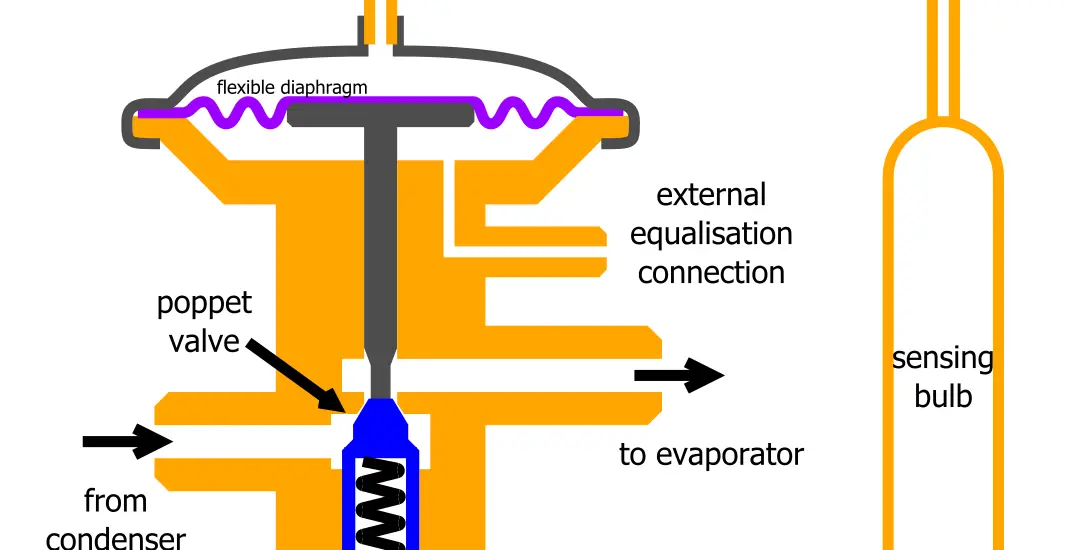Clogged expansion valve symptoms can be a frustrating issue to deal with. for any homeowner or HVAC technician. In this detailed guide, we’ll reveal these symptoms, and walk you through every step necessary to recognize and address them effectively.

Table of Contents
Recognizing Clogged Expansion Valve Symptoms
Knowing the specific symptoms to look for is the first step in diagnosing a clogged expansion valve. These symptoms may manifest themselves in various ways:
Poor Cooling Performance
When the expansion valve is clogged, the flow of refrigerant is restricted, leading to inadequate cooling. You may notice that the air coming from the vents is not as cold as usual or that the system is running constantly without reaching the desired temperature.
This symptom is often the first noticeable sign of a clogged expansion valve and should prompt further investigation.
Unusual Noises
A clogged expansion valve may produce hissing or bubbling sounds. These noises are caused by the restricted flow of refrigerant, which can create turbulence and pressure changes within the system.
If you hear these types of noises coming from your HVAC system, it may be indicative of a clog in the expansion valve, and professional inspection is recommended.
Increased Energy Consumption
A restricted flow of refrigerant forces the compressor to work harder to pump the refrigerant through the system. This increased workload leads to higher energy consumption, resulting in higher electricity bills.
If you notice a sudden spike in your energy costs without a corresponding increase in usage, it might be a sign of a clogged expansion valve.
Frost or Ice Formation
Another symptom of a clogged expansion valve is the formation of frost or ice on the evaporator coils. Since the expansion valve regulates the refrigerant entering the evaporator, a clog can cause the refrigerant to flow at an incorrect rate, leading to freezing conditions within the evaporator.
If you notice ice or frost on the coils, it’s a strong indication of a problem with the expansion valve, and immediate action should be taken to prevent further damage.
Check out these other related articles…
Expansion Valve Not Working: Fixed in 5 Easy Steps
How to Clean Expansion Valve: Your Easy 101 Guide
How to Unclog Expansion Valve in 6 Easy Steps
5 Expansion Valve Stuck Closed Symptoms: Easy Guide
Bad Expansion Valve Pressures: A Complete Guide
5 Expansion Valve Stuck Open Symptoms: A Comprehensive Guide
Diagnosing and Fixing the Issue
Once you’ve recognized the clogged expansion valve symptoms, follow these step-by-step instructions to diagnose and fix the issue:
Turn Off the System – Safety first! Ensure the HVAC system is off before proceeding.
Inspect the Valve – Check for visible signs of clogging, such as dirt or debris.
Use Diagnostic Tools – Tools like a manifold gauge can help you confirm a clog in the valve.
We recommend the Orion Motor Tech AC Gauges, AC Manifold Gauge Set listed on Amazon.
Clean or Replace – Depending on the severity of the clog, cleaning or replacing the valve may be necessary.
Test the System – After fixing, run the system to ensure it’s operating correctly.
Preventing Future Clogs
Prevention is key to avoiding future issues with your expansion valve:
Regular Maintenance – Scheduled inspections and cleanings can prevent clogs.
Quality Filters – Using high-quality filters will minimize the chances of debris entering the system.
Proper Installation – Ensuring proper installation can prevent future clogs and maintain efficiency.
